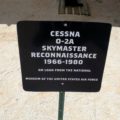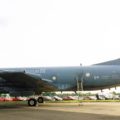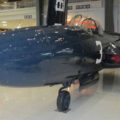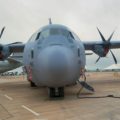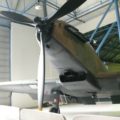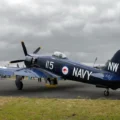
Avro Type 694 Lincoln | |
|---|---|
| Země | Uk |
| Roli | Těžký bombardér |
| První let | 9. června 1944 |
| Postaven | 604 |
Tá Avro Typ 694 Lincoln je britský čtyřmotorový těžký bombardér, který poprvé vzlétl 9. června 1944. První varianty Lincolnu, vyvinuté z Avro Lancaster, byly zpočátku známé jako Lancaster IV a V; byly přejmenovány na Lincoln I a II. Byl to poslední bombardér s pístovým motorem provozovaný Royal Air Force (RAF).
Zdroj: Avro Type 694 Lincoln na Wikipedii
| Avro Type 694 Lincoln II Walk Around | |
|---|---|
| Fotograf | Neznámé |
| Lokalizace | Neznámé |
| Fotografie | 23 |
Viz také:
text The Avro 694 Lincoln byl čtyřmotorový těžký bombardér vyvinutý z letounu Avro Lancaster během druhé světové války. Byl navržen tak, aby splňoval požadavky specifikace B.14/43 pro dálkový bombardér schopný operovat na bojišti Dálného východu. Válka však skončila dříve, než se Lincoln mohl zúčastnit bojové akce.
Lincoln měl delší a silnější křídlo než Lancaster a také výkonnější motory Rolls-Royce Merlin 85. Měl také větší pumovnici a zvýšenou kapacitu paliva, což mu poskytlo větší dolet a užitečné zatížení. Lincoln mohl nést až 6 350 kg bomb, včetně Grand Slamu, největší konvenční bomby, která kdy byla použita. Lincoln měl sedmičlennou posádku a byl vyzbrojen osmi kulomety ráže 0,303 palce (7,7 mm) ve čtyřech věžích pro sebeobranu.
Lincoln vstoupil do služby u Royal Air Force (RAF) v roce 1945 a zpočátku byl přidělen k jednotkám Tiger Force, těžkého bombardovacího sboru Commonwealthu, který se měl zúčastnit japonského tažení. Po válce zůstal Lincoln ve službě RAF až do roku 1963 a byl používán v různých rolích, jako je námořní hlídkování, protiponorkový boj, záchrana vzduch-moře a elektronický boj. Lincoln se také zúčastnil bojů během povstání Mau Mau v Keni a Malajské krize, kde prováděl bombardování a shazování zásob.
Lincoln byl také provozován Australským královským letectvem (RAAF) a argentinským letectvem. RAAF používalo Lincoln v Malajsii a Indonésii, zatímco argentinské letectvo jej používalo pro výcvik a přepravu až do roku 1967. Lincoln byl také používán jako testovací zařízení pro různé motory a zařízení, jako je turbovrtulový Armstrong Siddeley Python a turbovrtulový Bristol Proteus. Lincoln byl nahrazen proudovými bombardéry, jako byly English Electric Canberra a V-bombardéry (Avro Vulcan, Handley Page Victor a Vickers Valiant).
Avro 694 Lincoln byl posledním bombardérem s pístovým motorem provozovaným RAF a představoval vrchol britské konstrukce těžkých bombardérů. Jednalo se o výkonný a všestranný letoun, který sloužil s vyznamenáním v různých rolích a regionech. Lincoln byl důstojným nástupcem Lancasteru a předchůdcem éry proudových letadel.
Zobrazení : 986



